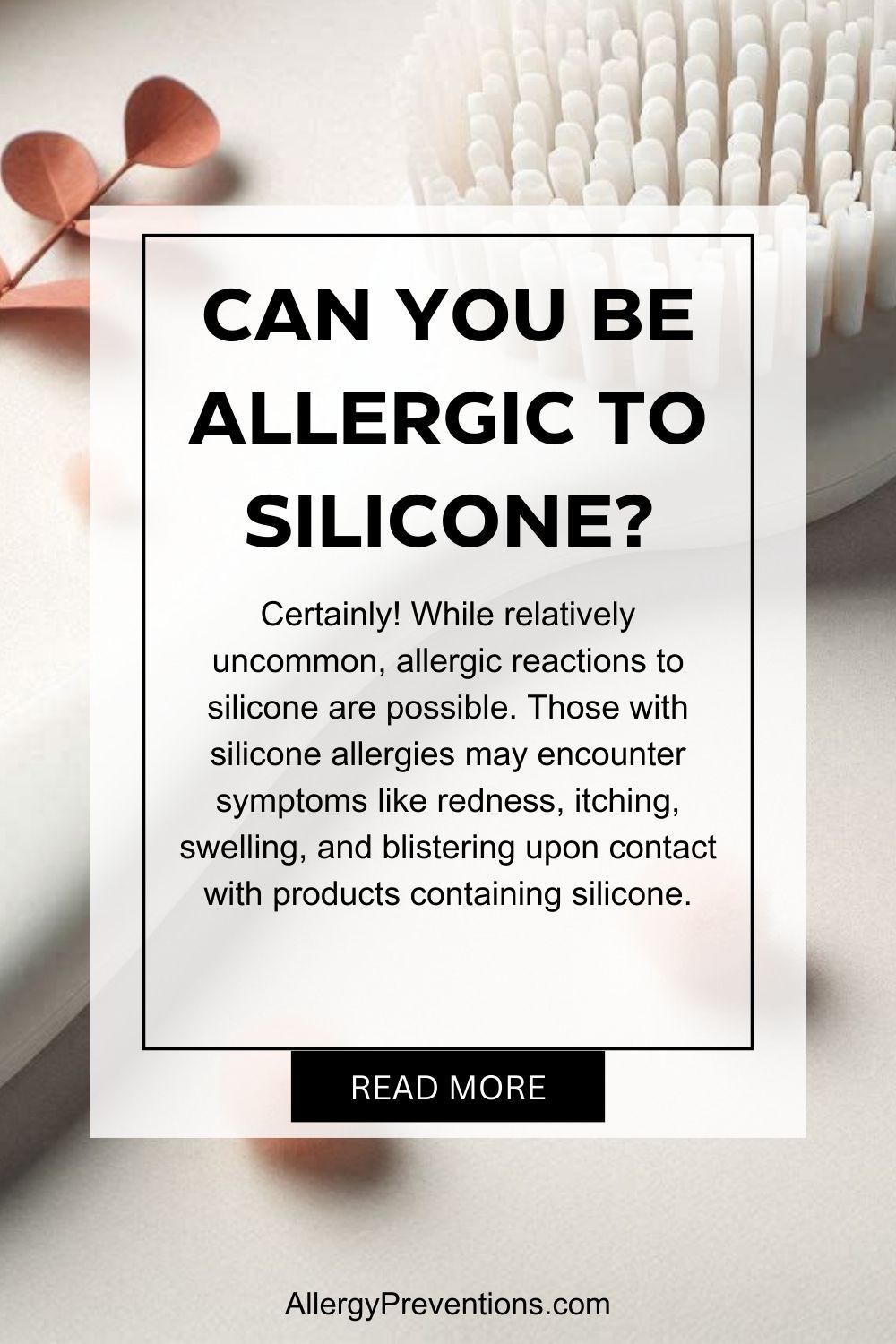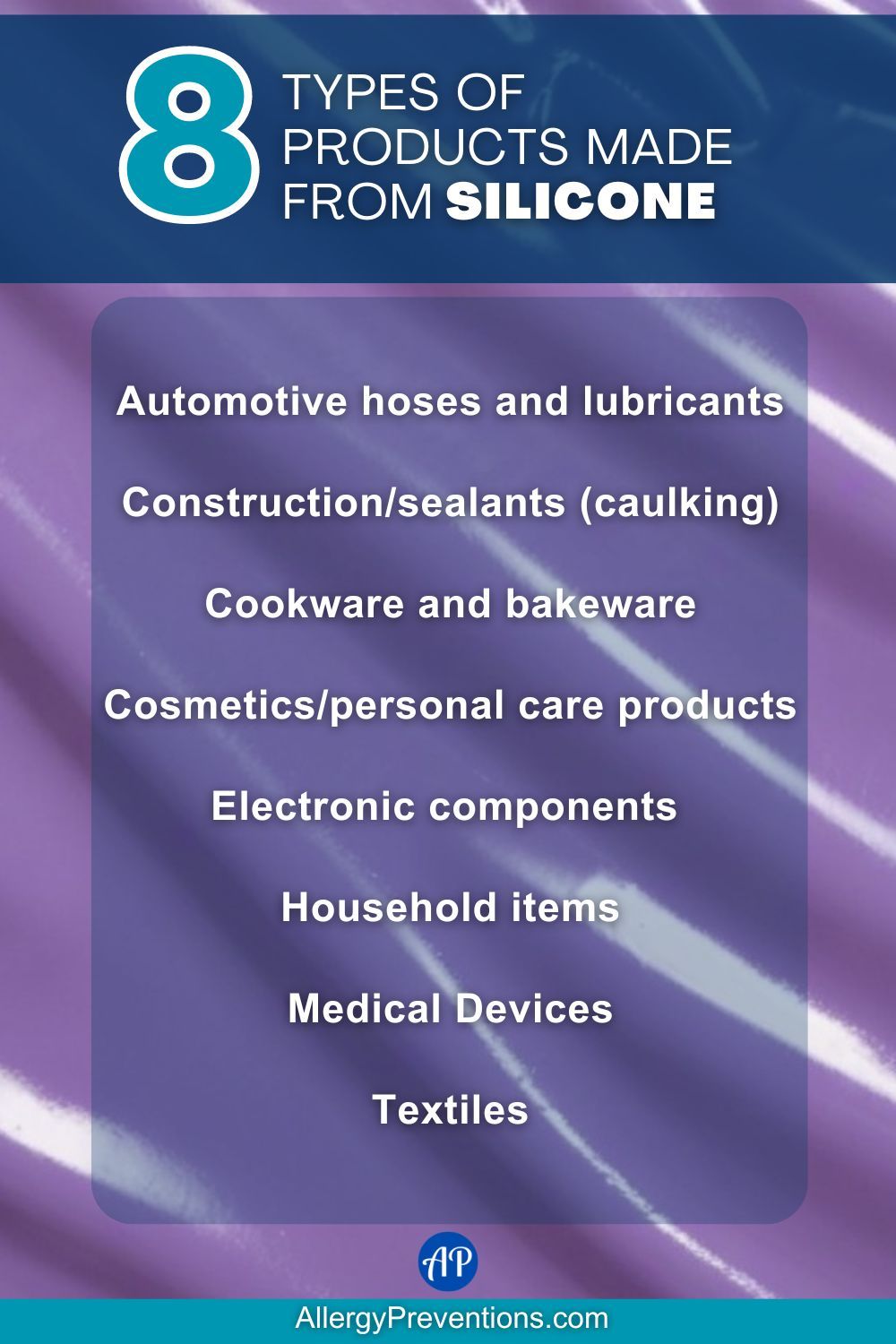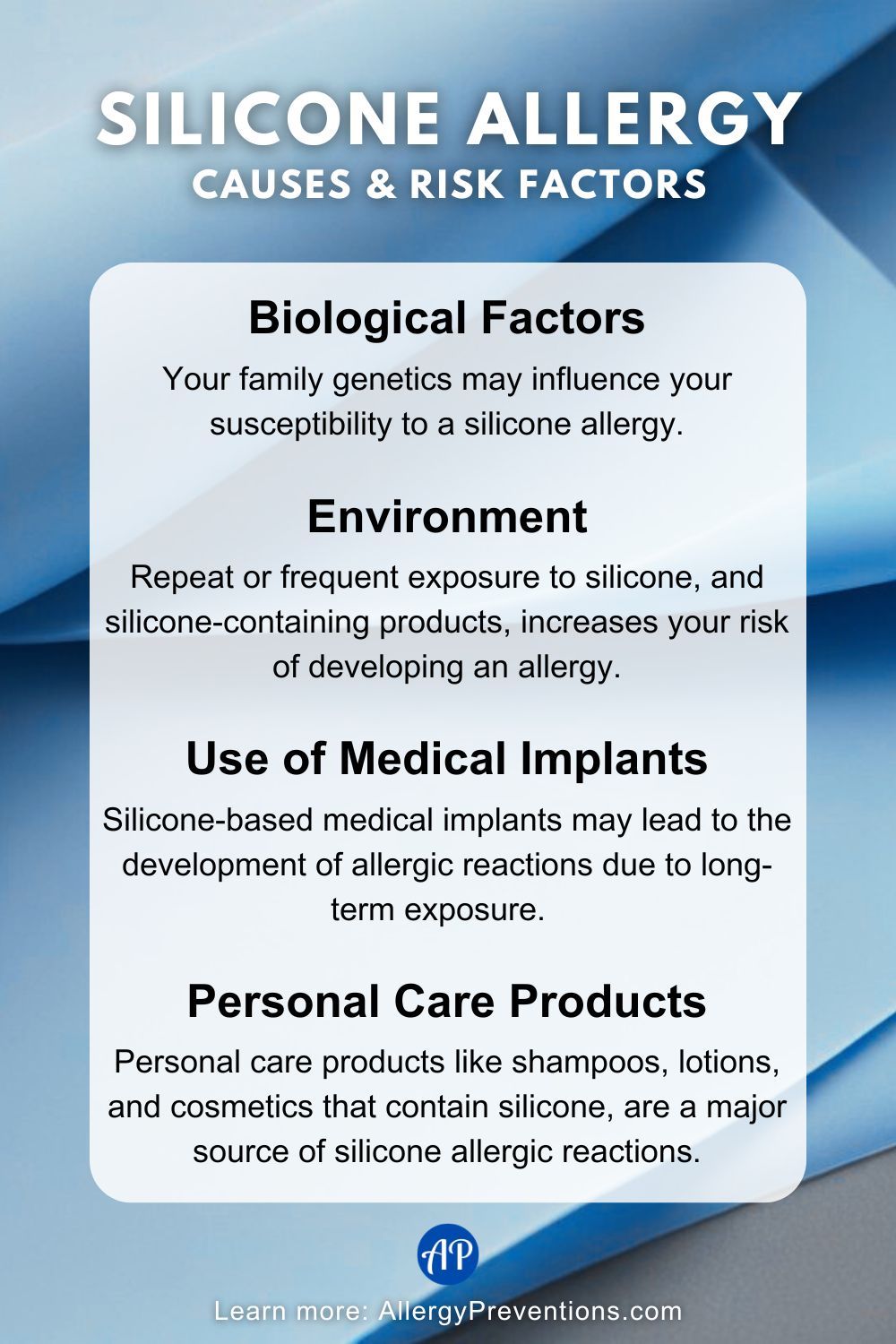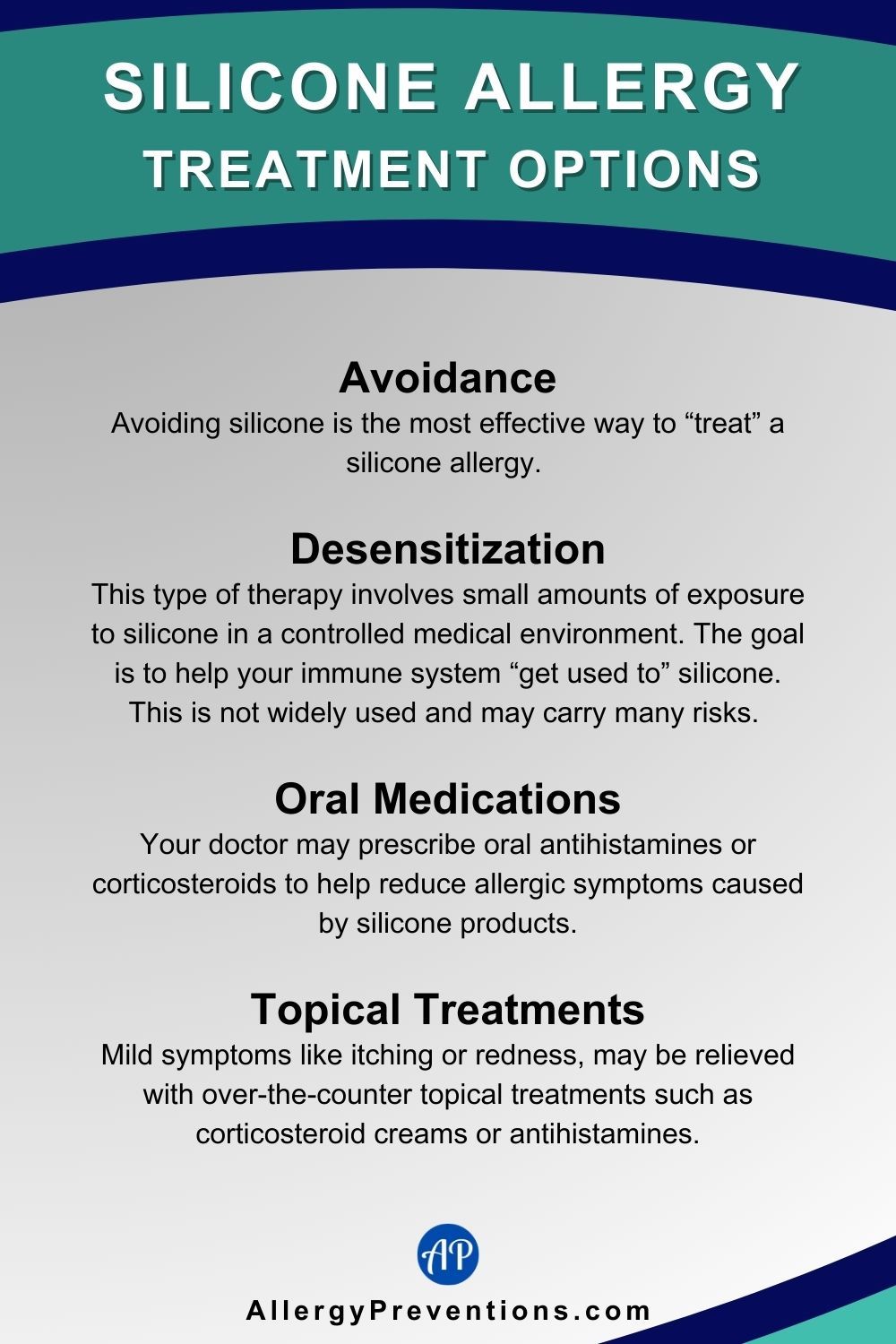Silicone allergies are becoming increasingly common as more products incorporate this versatile material. Whether you suspect you might have a silicone allergy or have already been diagnosed, understanding this condition is crucial. In this post, we’ll explore the triggers, symptoms, and prevention methods for silicone allergies to help you manage and minimize allergic reactions effectively.

As an Amazon Associate, I may get compensation for qualifying purchases.
Table of Contents
Understanding Silicone Allergies
Silicone allergies occur when the immune system reacts to silicone, a material commonly found in many everyday products like medical devices, cosmetics, and household items. Symptoms can range from mild skin irritation, such as redness and itching, to more severe reactions like swelling and blistering.
As silicone use becomes more widespread, awareness of its potential to cause allergies is essential. Proper diagnosis typically involves medical consultation and possibly allergy testing. Managing a silicone allergy primarily involves avoiding products containing silicone and using alternative materials whenever possible.
Can you be allergic to silicone?

Yes, it is possible to be allergic to silicone, though it is relatively rare. People who are allergic to silicone may experience symptoms such as redness, itching, swelling, and blistering at the site of contact with silicone-containing products.
What is silicone?
Silicone is a man-made material derived from silicon, a natural element found in sand and rock. When silicon is combined with oxygen, carbon, and hydrogen, it creates a flexible and durable substance called silicone. This material is known for its unique properties: it is resistant to heat, water, and chemicals, and it remains stable across a wide range of temperatures.
Silicone Uses

Silicone is used in a wide variety of applications due to its unique properties such as durability, flexibility, and resistance to heat, water, and chemicals. Here are some common uses of silicone:
- Automotive: Silicone is used in gaskets, hoses, and lubricants for its ability to endure high temperatures and resist degradation from automotive fluids.
- Construction and Sealants: Silicone is used in caulking and sealants for buildings, windows, and doors due to its durability and weather resistance.
- Cookware and Bakeware: Silicone is popular in kitchens for making baking molds, spatulas, ice cube trays, and oven mitts because it can withstand high temperatures and is non-stick.
- Cosmetics and Personal Care Products: Silicone is found in lotions, shampoos, conditioners, and make up for its smooth texture and ability to create a moisture barrier on the skin or hair.
- Electronics: Silicone is used as an insulator and sealant in electronic devices to protect against moisture, dust, and extreme temperatures.
- Household Items: Silicone is used in a variety of everyday products such as kitchen utensils, baby bottle nipples, toys, and waterproof clothing.
- Medical Devices: Silicone is used in medical implants, catheters, tubing, and wound dressings because it is biocompatible and can be sterilized easily.
- Textiles: Silicone is applied to fabrics to provide water repellency, improve durability, and add softness.
Silicone’s versatility makes it an essential material across many industries, enhancing the performance and longevity of numerous products.
Is a latex allergy the same thing as a silicone allergy?

A latex allergy and a silicone allergy are not the same; they involve different materials and immune responses. Latex allergy is a reaction to proteins in natural rubber latex, found in products like gloves, balloons, and condoms, causing symptoms from itching to severe anaphylaxis.
In contrast, silicone allergy is a reaction to synthetic silicone, used in medical devices, cookware, and personal care items, typically causing localized skin reactions such as redness and itching. Proper diagnosis and management require understanding these differences and consulting a healthcare professional.
Types of Silicone Allergies

Silicone allergies typically manifest as contact dermatitis, which is an allergic reaction that occurs when the skin comes into direct contact with silicone-containing products. There are two main types of silicone allergies:
- Delayed Hypersensitivity Reaction: This is a delayed allergic reaction that occurs when the immune system sensitizes to silicone after repeated exposure. Symptoms may include redness, itching, swelling, and blistering at the site of contact with silicone.
- Immediate Hypersensitivity Reaction: This type of allergy is less common but can result in more severe symptoms such as hives, wheezing, difficulty breathing, or anaphylaxis shortly after contact with silicone. Immediate hypersensitivity reactions are typically IgE-mediated, involving a rapid immune response.
Both types of silicone allergies can cause discomfort and may require medical attention. If you suspect you have a silicone allergy or experience symptoms after contact with silicone-containing products, it’s essential to consult with a healthcare professional for proper diagnosis and management.
Symptoms of A Silicone Allergy

A silicone allergy can present many different symptoms, that vary from person to person. Here is a list of potential symptoms you may see in someone with an allergy to silicone:
- Blisters
- Cognitive issues
- Chronic fatigue
- Dry, cracked, and scaly skin
- Fever
- Hives
- Itching and rashes
- Joint pain
- Muscle aches
- Pain and discomfort
- Redness and swelling at the contact site
- Systemic reactions
- Swelling
Most Common Silicone Allergy Symptoms

The most common silicone allergy symptoms are caused by exposure to silicone on the skin and are rash, itching, and swelling of the skin.
Skin Rash
A skin rash is one of the most common symptoms of a silicone allergy. It can appear as red, inflamed patches on the skin that may be itchy and uncomfortable.
Itching
Persistent itching, often accompanying a rash, is another frequent symptom. This can range from mild to severe and can be particularly distressing.
Swelling
Localized swelling at the site of silicone exposure is also common. This can occur around medical implants, contact points with personal care products, or other areas of silicone exposure.
Uncommon Silicone Allergy Symptoms

The more “uncommon” silicone allergy symptoms are typically caused by immediate hypersensitivity to silicone and produce systemic symptoms as well as an allergic cough or difficulty breathing.
Respiratory Issues
In rare cases, individuals with a silicone allergy may experience respiratory symptoms. This can include difficulty breathing, wheezing, and coughing, particularly if the silicone exposure is airborne or from implants.
Systemic Reactions
Systemic reactions can involve widespread symptoms such as a generalized rash, fever, and malaise. These reactions are serious and require immediate medical attention.
Silicone Allergy Causes and Risk Factors

While the exact cause of silicone allergy is not fully understood, several factors may contribute to its development like genetics, exposures, and product use.
Biological Factors
Genetic factors can play a role in silicone allergies. Individuals with a family history of allergies or autoimmune conditions may be more susceptible to developing an allergy to silicone.
Environmental Factors
Frequent exposure to products containing silicone in your environment, such as cosmetics, household items, and medical devices, increases the risk of developing an allergy. The more items that you are exposed to that contain silicone, the increased risk of having a silicone allergic reaction.
Use of Medical Implants
The use of silicone-based medical implants, such as breast implants or joint prostheses, can lead to allergic reactions in some individuals. Long-term exposure and the body’s response to the implanted silicone are critical factors.
Personal Care Products
Personal care products, including lotions, shampoos, and cosmetics, often contain silicone. Regular use of these products can contribute to the development of contact dermatitis and other allergic reactions.
Diagnosing and Testing for A Silicone Allergy

Diagnosing and testing for a silicone allergy is necessary when finding the root cause of your symptoms. Here are the likely steps, and options your healthcare provider may use before their official diagnosis.
Clinical Evaluation
A thorough clinical evaluation by a healthcare professional is the first step in diagnosing a silicone allergy. This includes a detailed medical history and examination of symptoms.
Patch Testing
Patch testing is the most common diagnostic tool used to identify contact allergies, including silicone. Small amounts of potential allergens are applied to the skin, and the area is monitored for reactions over several days.
Blood Tests
Blood tests, such as the ImmunoCAP test, can detect specific antibodies related to allergic reactions. These tests can help confirm a diagnosis of silicone allergy.
Skin Biopsy
In some cases, a skin biopsy may be necessary to examine the affected tissue microscopically. This can help rule out other conditions and confirm an allergic reaction.
Silicone Allergy Treatment Options

Silicone allergy is a relatively rare but growing concern, especially with the increased use of silicone-based products in various industries. Here are some treatment options for silicone allergy:
- Avoidance: The most effective way to manage a silicone allergy is to avoid contact with silicone-containing products.
- Desensitization Therapy: This involves exposing the individual to small amounts of silicone under controlled conditions to help the immune system become less reactive over time. However, this approach is not widely used for silicone allergies and may carry risks.
- Oral Medications: In more severe cases, your doctor may prescribe oral antihistamines or corticosteroids to help reduce allergic symptoms.
- Topical Treatments: For mild symptoms like itching or redness, over-the-counter topical treatments such as corticosteroid creams or antihistamines may provide relief.
It’s important to note that treatment options may vary depending on the severity of the allergy and individual circumstances. Always consult with a healthcare professional for personalized advice and treatment recommendations.
Prevention Measures For A Silicone Allergy
Preventing a silicone allergy involves minimizing exposure to silicone-containing products and taking precautions to avoid triggering allergic reactions. Here are some prevention measures:
Identifying and Avoiding Silicone-Containing Products
Awareness of products that contain silicone is crucial. Common items include certain cosmetics, personal care products, and medical devices. Opting for silicone-free alternatives can prevent allergic reactions.
Sources of Silicone That May Cause Allergy Flare-ups

Finding the source of your silicone exposure can be tricky, as silicone is used in thousands of products. Here is a list of products that may contain silicone:
- Adhesive bandages
- Adhesives (e.g., silicone-based sealants)
- Baby bottle nipples
- Bath toys
- Breast implants
- Caulking
- Contact lenses
- Cosmetic implants
- Cosmetics (e.g., makeup, skincare products)
- Dental implants
- Earplugs
- Electrical insulation
- Electronic devices (e.g., smartphones, keyboards)
- Fabric softeners
- Hair care products (e.g., shampoos, conditioners)
- Lubricants (e.g., personal lubricants)
- Medical tubing
- Medical devices (e.g., catheters, prosthetics)
- Menstrual cups
- Oven mitts
- Pacifiers
- Personal care products
- Pet grooming products
- Plungers
- Pool toys
- Rubber bands
- Sealants (e.g., for windows, doors)
- Self-adhesive labels/stickers
- Sex toys
- Shower curtains
- Silicone Bakeware
- Silicone cookware
- Silicone implants (e.g., for cosmetic surgery)
- Silicone rubber products
- Skin patches (e.g., nicotine patches)
- Skincare products
- Skincare patches (e.g., acne treatment patches)
- Spray-on sunscreen
- Stamps (e.g., rubber stamps)
- Surgical gloves
- Surgical implants
- Synthetic fibers
- Teething toys
- Textile coatings
- Thermal insulation
- Toothbrushes (silicone bristles)
- Tubing (e.g., for aquariums, home brewing)
- Vehicle parts (e.g., gaskets, hoses)
- Waterproof clothing
- Wristbands (e.g., fitness trackers)
What about silicone watch band allergies?

Watch bands or wristbands on your fitness device, or smartwatch are a major source of silicone allergy flare-ups. If you suspect that your watch band is the cause of your allergic reactions, it is recommended that you switch to a silicone-free band.
Find Alternative Materials

Using alternative materials in place of silicone can help reduce the risk of allergies. For instance, choosing non-silicone medical implants or personal care products made with natural ingredients can be beneficial. Here is a list of silicone-free materials:
- Aluminum
- Bamboo
- Biodegradable Plastics (e.g., PLA – Polylactic Acid)
- Borosilicate Glass
- Ceramics
- Cotton
- EPDM Rubber (Ethylene Propylene Diene Monomer)
- Latex
- Leather
- Natural Rubber
- Nitrile Rubber
- Polyethylene
- Polypropylene
- Polyurethane
- PVC (Polyvinyl Chloride)
- Silk
- Stainless Steel
- Thermoplastic Elastomers (TPE)
- Wood
- Wool
These materials can be used in various applications as substitutes for silicone, depending on the specific requirements such as flexibility, durability, heat resistance, and biocompatibility.
Protective Clothing and Gloves
If you work in an environment where you’re regularly exposed to silicone-containing materials, consider wearing protective clothing, gloves, or other barriers to prevent direct skin contact.
Use Hypoallergenic Skincare Products

Regular monitoring of the skin for signs of irritation and maintaining a healthy skincare routine can prevent flare-ups. This includes using mild, hypoallergenic products and avoiding known irritants.
Knowing what is in your skincare products is a major step in preventing allergic reaction breakouts. Consider using products from companies, that only produce non-toxic products like Pure Haven.
Pure Haven has a huge lineup of soaps, shampoos, household cleaners, and makeup, that are literally 100% chemical-free.
Conclusion
Silicone allergy, though rare, can cause significant discomfort and health issues for those affected. Understanding the types, symptoms, and causes of silicone allergy is crucial for effective management. Proper diagnosis and treatment, along with preventive measures and lifestyle adjustments, can help individuals live comfortably with this condition.

